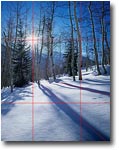In preparation for the Nature Photography Challenge, which begins next TUESDAY, NOVEMBER 1st, I wanted to post a few helpful tips for inspiration!
Click here to read some suggestions related to landscape photography compositions. If you do not like following links or reading large amounts of content, here’s the gist of Guy Tal’s suggestions:
1. Rules are not recipes for success. They are more like GUIDING PRINCIPLES. They may not work in every situation. However, they do play a role in understanding what has been known to work in certain situations. At the deciding moment, rules aside, the only thing that matters is what you see through the view finder.
2. Take into consideration the SCALE of your scene (Grand Scenic, Intimate- Isolating the scene within a scene, or Close-up/Macro) when you are planning your composition. Be open to different scales–and think of all possibilities. You may find new and original compositional possibilities through simply keeping an open mind.
3. Take into account the “raw materials” in your composition:
- Light – its direction (or lack thereof), angle, and color
- Shapes – the outlines and surface of objects in the scene
- Lines – these can be straight or curved, pointing in or out of the frame, to or from a given object etc.
- Textures and patterns
- Colors and tones
- Frame boundaries
4. Anticipate quick changes in light, keeping in mind the following:
- Grand scenes, covering vast areas, with the sky prominent in the frame, often look their best within an hour on either side of sunrise or sunset.
- Intimate scenes, or other subjects where capturing the utmost detail is essential often work best in indirect or diffused light. Direct sunlight may result in high contrast (deep shadows and/or bright highlights) that may distract from the fine detail.
- Carefully consider the direction of the light. Back-light or side-light can be used to enhance detail, while light coming at a high angle can create large unsightly areas of dark shadows
- Diagonal lines often work better than horizontal or perpendicular ones
- Intersections of lines form immediate power points. These can be lines intersecting inside the composition or the intersection of a line with a frame boundary or corner
- A common mistake is for lines to point out of the frame, leading the viewer away from your subject and making them wonder what else is out there. Be aware of the directions of strong lines in your composition.
- Combine leading lines with Rule of Thirds to further enhance your composition’s focal point.


Very well written post. It will be supportive to everyone who employess it, including me. Keep doing what you are doing – i will definitely read more posts.
When I see a scene or a subject that interests me, I ask myself “why?” That is why am I drawn to that image? Why does it stand out in my mind? What is it that is grabbing my attention? When I can answer that question, it can help me build the composition around the kernel that grabs me most strongly. All the tips above are good, but first ask yourself why you want to take create the image. Best of luck with your nature photography challenge.
Thanks for your tips! While initial interest is important, asking yourself WHY you want to create that particular image or capture that particular moment is definitely an significant part of the art making process! I’m definitely enjoying my photographic explorations this month!